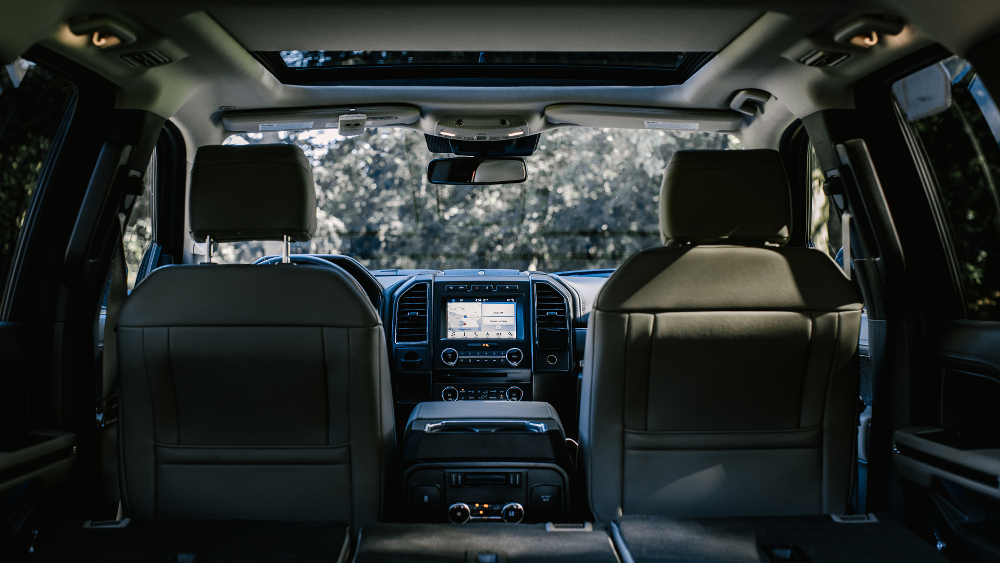Forget all the other tech in the 2018 Ford Expedition – this is a USB charging monster
Bring your own device

Photo credit: Josiah Bondy
If you want to point to a single trend in automotive tech, you might pick autonomous driving, safety features like back-up cams, or maybe lane-keeping in even the most affordable cars like the Ford Focus.
Some high-tech marvels like the 2019 Mercedes-Benz EQC might catch your eye – it has one of the most beautiful dash displays ever. For trucks, the 2019 RAM 1500 has a screen the size of an iPad Pro, and it’s a wonder to behold.
Then again, some of that tech might need to take a backseat. On a recent test of the 2018 Ford Expedition, a fairly low-tech feature became the one everyone liked to use the most. The SUV has a total of six USB ports scattered throughout the cab, and a wireless charger for anyone with a compatible phone (such as the iPhone X or many Samsung models).

Photo credit: Josiah Bondy
The real trend here is 'bring your own device', and it’s one that worked well in this massive SUV. In the test, we crammed in seven people, all with an iPhone or an iPad. Every single person was able to charge, including my own iPhone X on the wireless charger. On a long trip, this meant everyone was able to watch a movie, play Fortnite, and catch up on work email without any worries about charging up or using a back-up battery.
You might think this is not that important, but in most cars, you won’t find anywhere near seven ways to charge gadgets. On most passenger cars, you’re lucky to find two ports and maybe three at the most (including two in the front and one between the seats).
Get daily insight, inspiration and deals in your inbox
Sign up for breaking news, reviews, opinion, top tech deals, and more.
Powered up
Where is this heading? You can imagine future cars that have USB-C ports instead of the standard USB that’s been around a while. And, we’ll start seeing more and more wireless chargers that use the Qi format. After that, there have been rumblings for years about wireless charging that takes place over the air. I’ve tested products from a company called Energous that can charge over the air (when I tested it, my phone required a special case).
Even the car itself will someday charge over the air. BMW already offers a charging pad for electric cars (available only in Europe for now, although we hear it is coming to the US as well). In the far future, wireless charging could take place as you drive along the road or even from satellites. In other words, how you charge is going to become even more important.

Photo credit: Josiah Bondy
Bring your own gadget is a trend because it simplifies your life. Even when cars have built-in screens, it’s surprising to see how often passengers will pull out their own iPad or iPhone, even when the screen in the car is connected to a 4G LTE signal and looks better.
The bad news for automakers is that it could mean all of the tech available in cars will become less and less important – that we’ll use our phones more for navigation, music streaming, apps, and entertainment. That’s one reason Android Auto and Apple CarPlay have become so popular – connect up, keep your device charged, save all of your settings.
The familiar tech we use all day trumps the tech you might find within the car, although that doesn’t settle the issue of distracted driving. For now, Ford is content providing the juice you need and the tech in the console. At least everyone who is not driving is perfectly content.
On The Road is TechRadar's regular look at the futuristic tech in today's hottest cars. John Brandon, a journalist who's been writing about cars for 12 years, puts a new car and its cutting-edge tech through the paces every week. One goal: To find out which new technologies will lead us to fully driverless cars.
John Brandon has covered gadgets and cars for the past 12 years having published over 12,000 articles and tested nearly 8,000 products. He's nothing if not prolific. Before starting his writing career, he led an Information Design practice at a large consumer electronics retailer in the US. His hobbies include deep sea exploration, complaining about the weather, and engineering a vast multiverse conspiracy.
